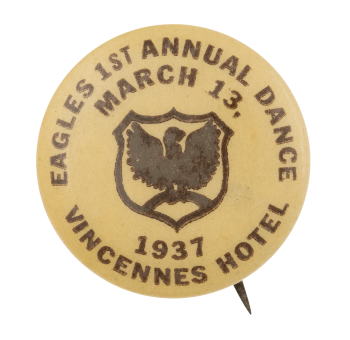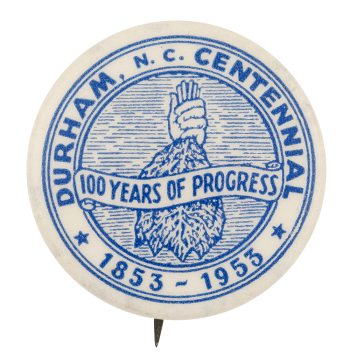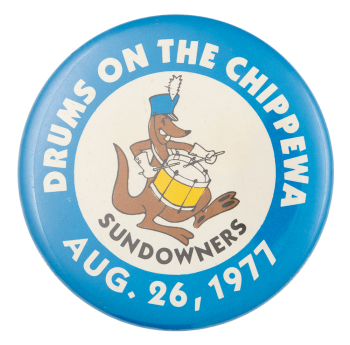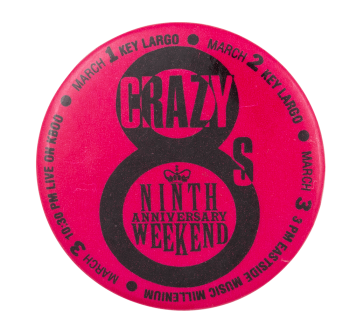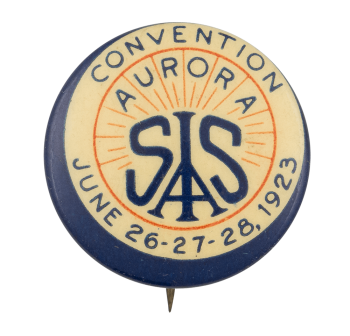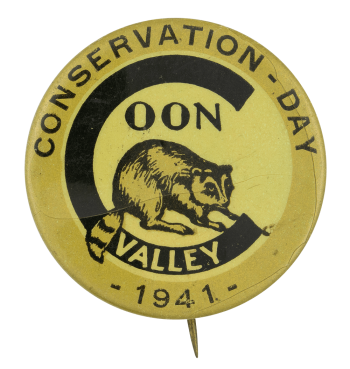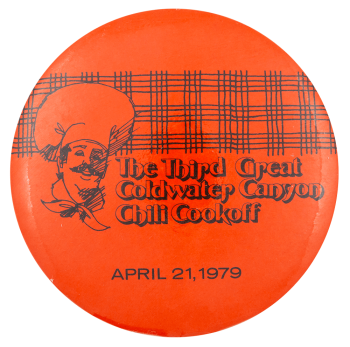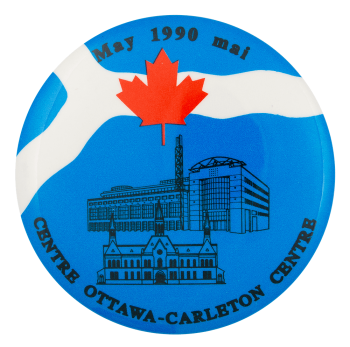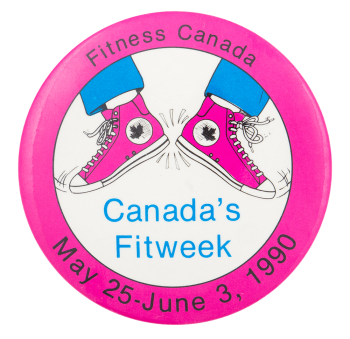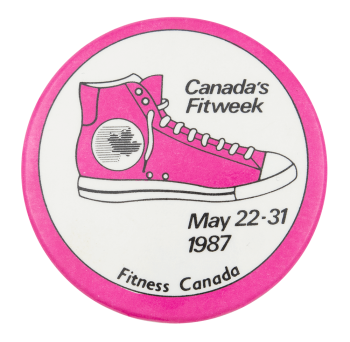Eagles First Annual Dance
| Category | |
|---|---|
| Additional Images | |
| Sub Categories | |
| Text on Button | EAGLES 1ST ANNUAL DANCE MARCH 13, 1937 VINCENNES HOTEL |
| Image Description | Brown text and an illustration of a brown eagle inside a shield shape on an off white backgroun |
| Back Paper / Back Info |
Made by AMERICAN BADGE CO. CHICAGO, ILLS. |
| Back Style | |
| The Shape | |
| The Size | |
| Year / Decade Made | |
| The Manufacturer | |
| Additional Information | The Vincennes Hotel was historically located at 36th and Vincennes Ave in Chicago, IL, just a few blocks from the historical Lindblom Technical High School, home of the Eagles. Lindblom Technical High School was founded in 1919 and still resides in its original location. While the Vincennes Hotel is no longer standing, in its time, it was nationally known for its fine cuisine and service. It was also the largest black owned and operated hotel in the Northern United States at the time. |
| Sources |
Hotels – T-Z. (n.d.). Retrieved from http://chicagopc.info/hotels/hotels-t-z/ Schomburg Center for Research in Black Culture, Jean Blackwell Hutson Research and Reference Division, The New York Public Library. (1925). New Hotel Vincennes; On Vincennes Avenue and 36th Street is the New Vincennes Hotel, largest and most beautiful hostelry owned and operated by Negroes in the north. Retrieved from http://digitalcollections.nypl.org/items/510d47de-4d66-a3d9-e040-e00a18… Strazzabasco, P. (2010, June 9). Landmark honors bestowed on Lindblom High School. Retrieved from https://www.chicago.gov/city/en/depts/dcd/provdrs/hist/news/2010/jun/la…
|
| Catalog ID | EV0660 |

